What is Tissue Silk Saree?
Tissue silk saree is one of the most delicate and feminine saree form. The tissue silk is woven with incredibly fine silk threads that give them the feel and texture of tissue paper. When it comes to silk sarees, this is one of the most well-known saree.
Tissue silk is popular for their sheen and excellent finish. Moreover, The allure of these sarees is everlasting, because to their excellent design. With their translucent fabric and unrivalled craftsmanship, they exude grace with a hint of feminity. Also, The transparent look, metallic luster, and shot effect of tissue silk sarees are well-known. Silver and gold threads are weaved into the fine silk fabric, which is occasionally embossed with elaborate designs.
Types of Tissue Silk sarees
Sarees made of linen tissue are very popular. They’re light, easy to drape, and quite lovely. The saree is comprised of high-quality gold tissue, which gives it a shiny appearance and makes it suitable for party wear.
Kota Tissue saree
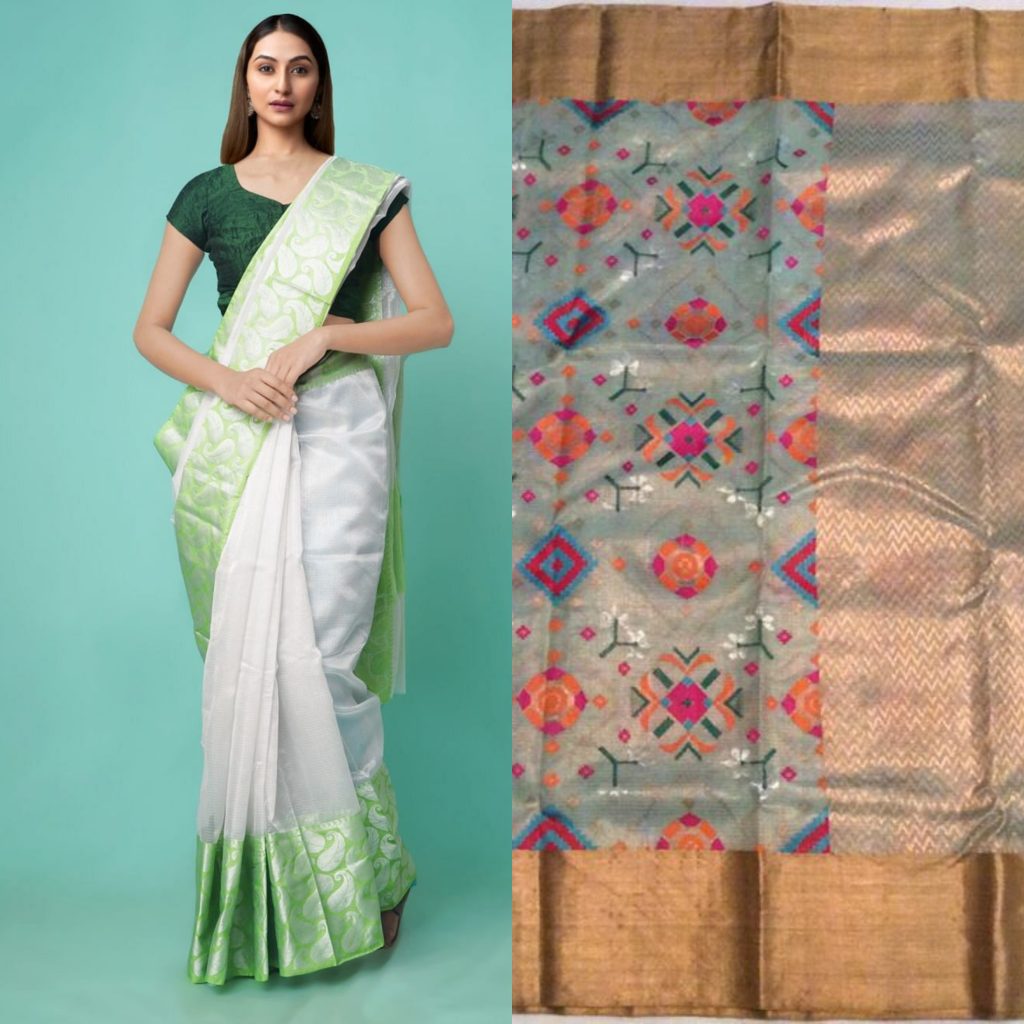
Kota Tissue silk saree is also famous as Kota Dohria Saree. Because this saree is from Rajasthan, it reflects the state’s aesthetic sensibilities, distinguishing it unique from other sarees. On the overall, they provide a really distinctive look. Furthermore, The patterns known as khats all over the fabric are one of the main causes for this particular feature. Small squares are used to create these patterns, which may or may not be decorated with needlework or small, sparkling stones.
Uppada Silk Saree
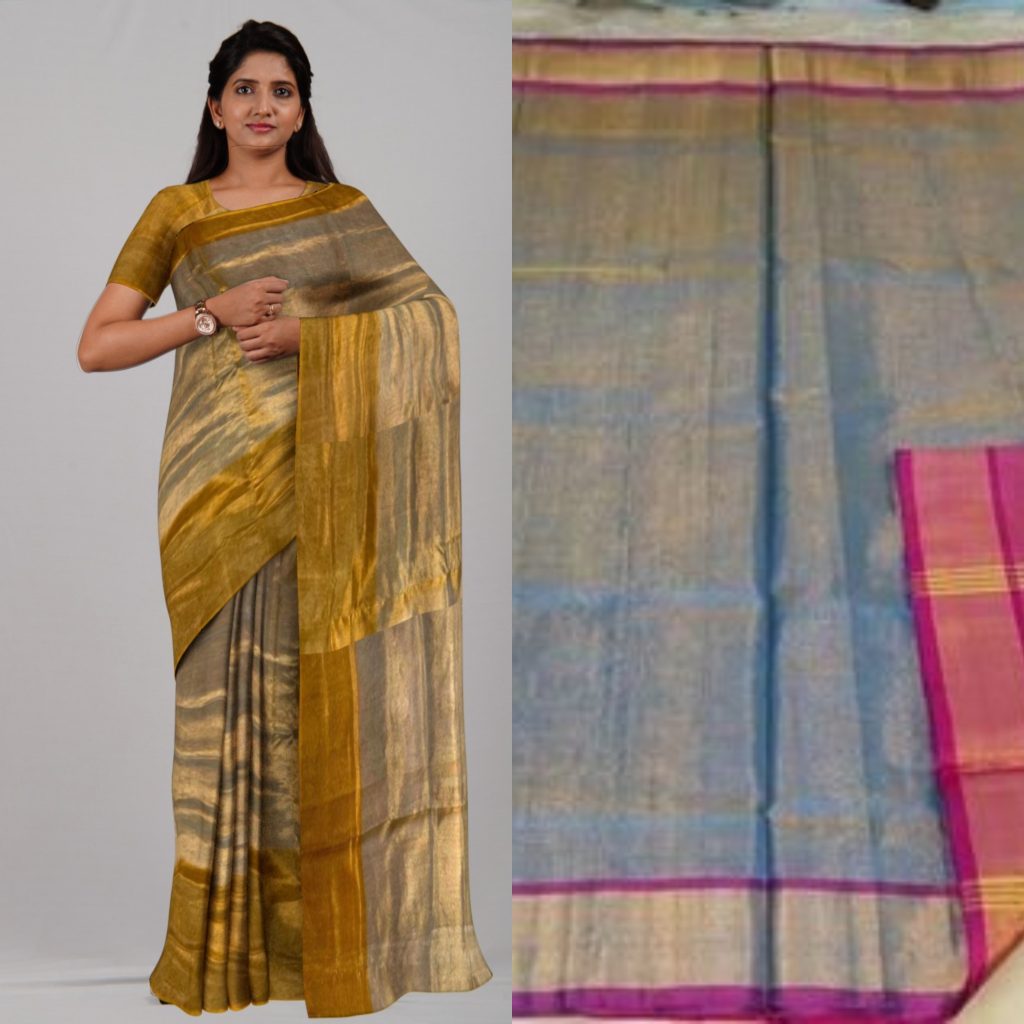
Uppada silk comes from the South Indian region. Also, Uppada tissue silk saree is famous for it’s light weight and silky feel. You may have seen Tollywood actresses often appear in Uppada tissue silk saree, that shows the popularity of it. These days, you will find many variations in this like Stripped pattern, small butta, checks, and Half & half Uppada tissue silk saree style.
Chanderi Saree
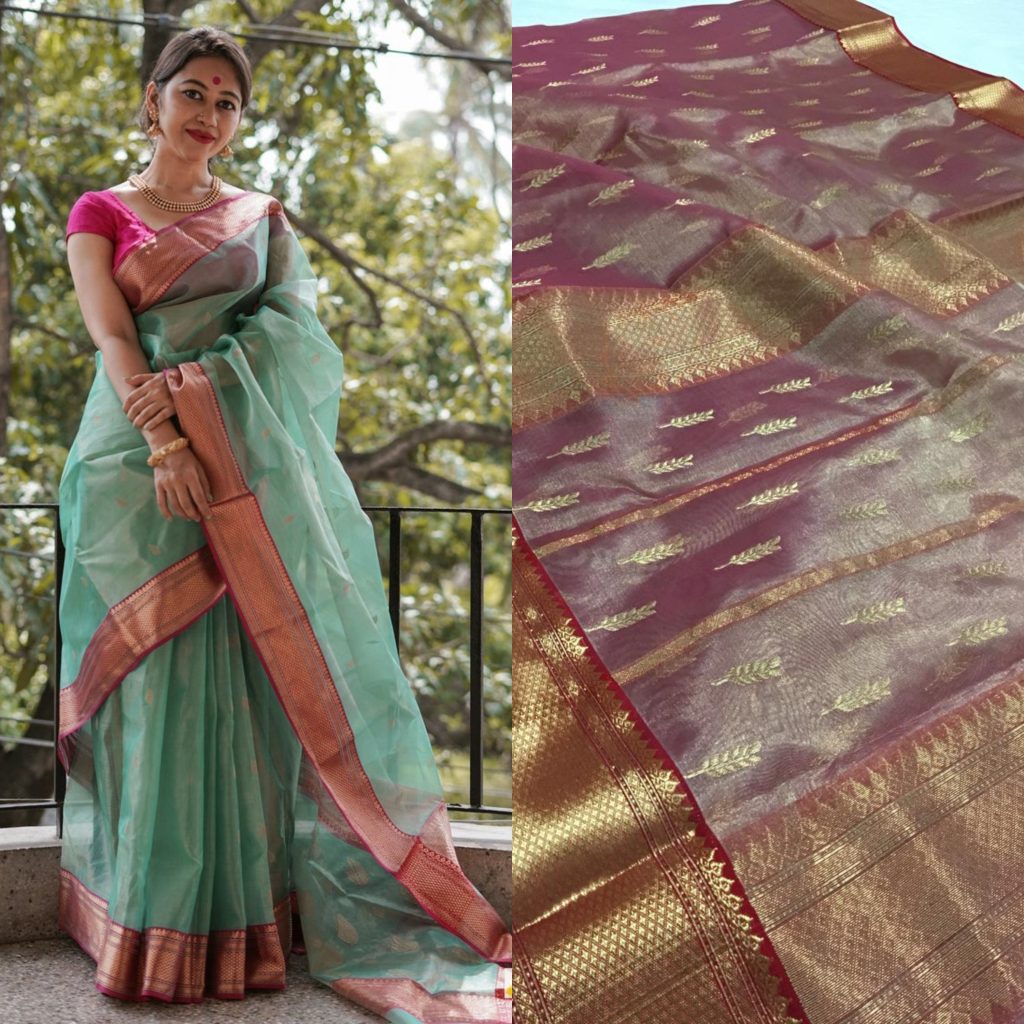
Because of their transparency and transparent texture, Chanderi tissue silk sarees are often referred to as “woven air.” The yarn used to weave Chanderi fabric is not degummed to prevent breakage at the time of weaving, which gives the fabric its distinct texture. Chanderi sarees are traditionally from Chanderi, a small town in Madhya Pradesh, and are now popular all over India because to their exquisite designs.
Kanchipuram saree
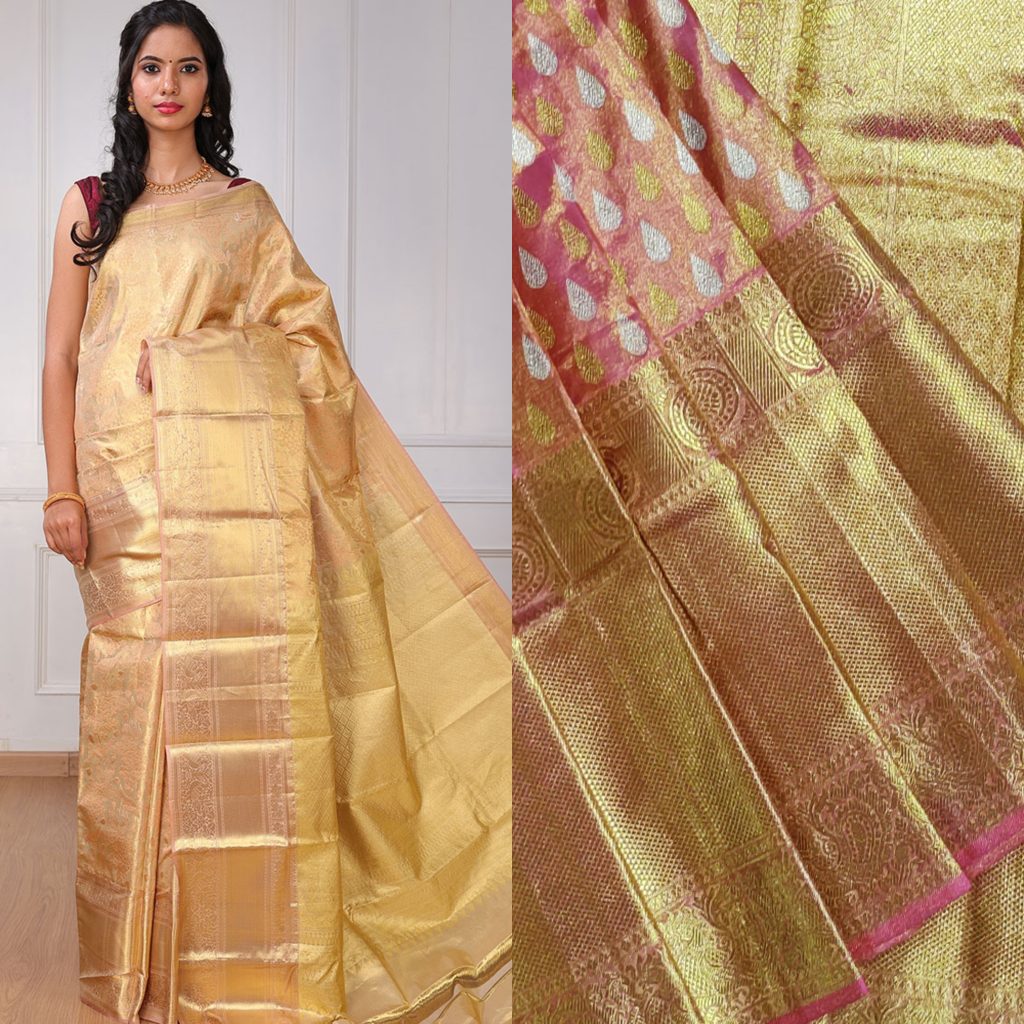
If you don’t like to wear a heavy Kanjeevaram silk saree on a special ceremony, have you considered a Kanchipuram tissue silk saree instead? The beauty of tissue as a fabric is that it is extremely light-weight and sits gently but gracefully on your body, allowing you to move around freely. Furthermore, if sarees aren’t your thing, a tissue saree will be your best friend on your wedding day, and it won’t let you down no matter how long you wear it!
Everyone is familiar with the opulent and well-known Kanchipuram Saree. The Kanchipuram tissue silk saree, on the other hand, is well-known for its lightness and traditional border and motif features. Furthermore, the golden and silver Kanchipuram tissue saree took center stage because it appears to be really royal. To add some oomph, combine this classic saree with a contrasting silk blouse.
Banarasi Sarees
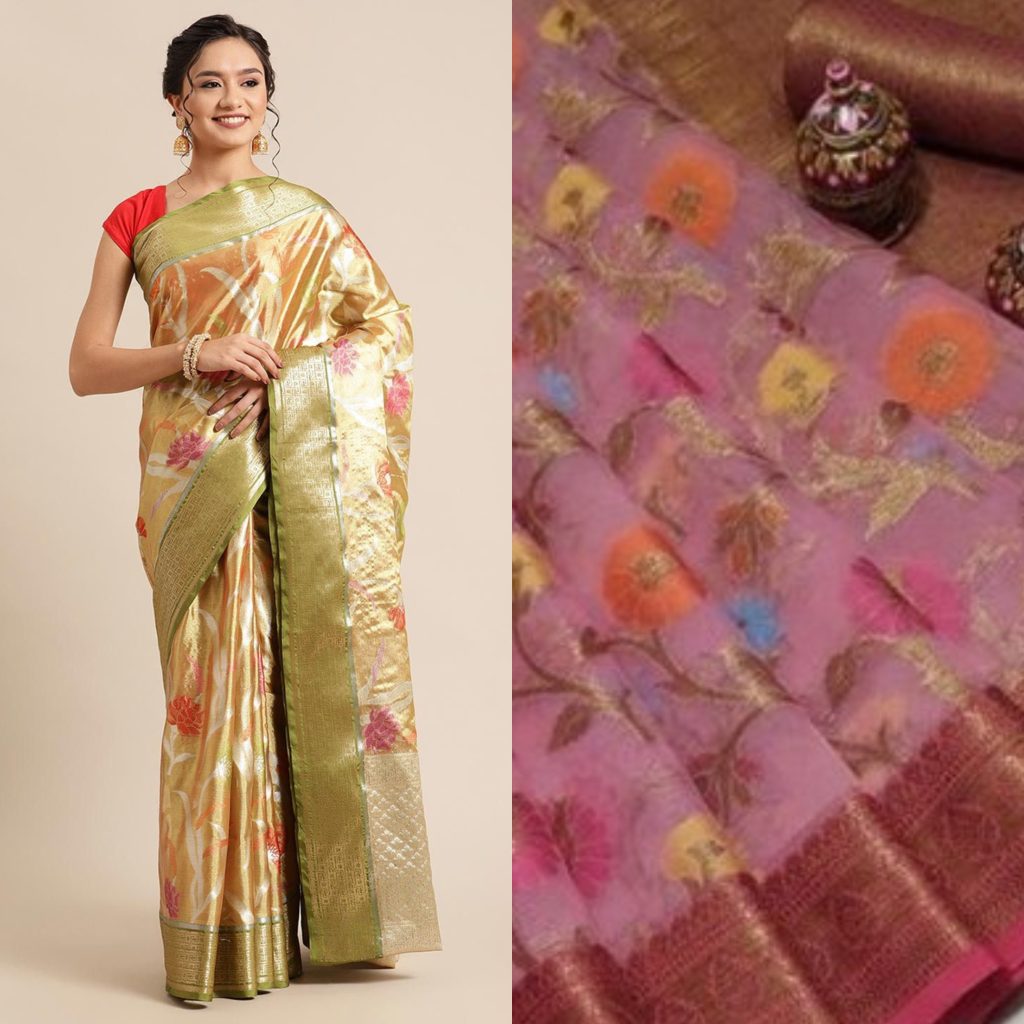
The beauty of banarasi tissue sarees is unmatched, and they are adored by all. Banarasi tissue sarees are perfect for any event, and you’ll find the drape of your dreams at Sacred Weaves. Because of the gold zari work that makes Banarasi sarees stand out, they are also famous as golden cloth. Also, Banarasi Tissue saree is available in many colors and weave designs. So, If you’re a wedding guest then surely opt for it with the traditional accessories.
Is Tissue a Pure silk?
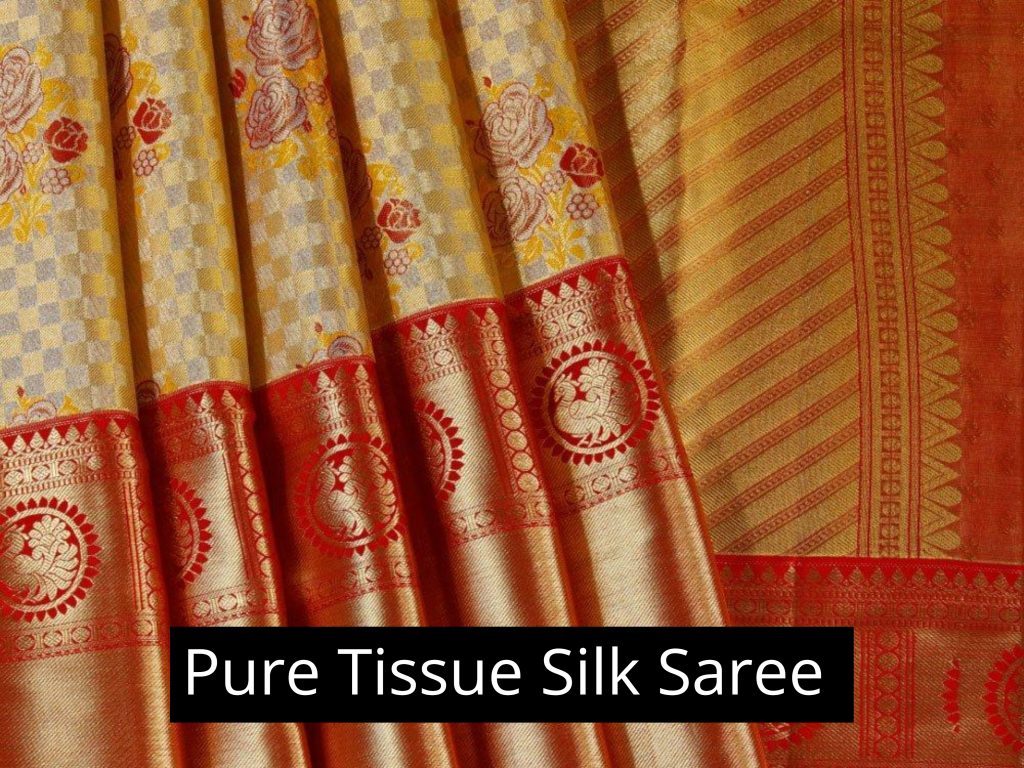
Sarees made of tissue silk are a type of silk saree. The silk yarn utilized in this, as well as the zari, is incredibly fine. The application of gold and silver zari along the warp and weft gives the saree a metallic appearance.
Is Tissue saree easy to wear?
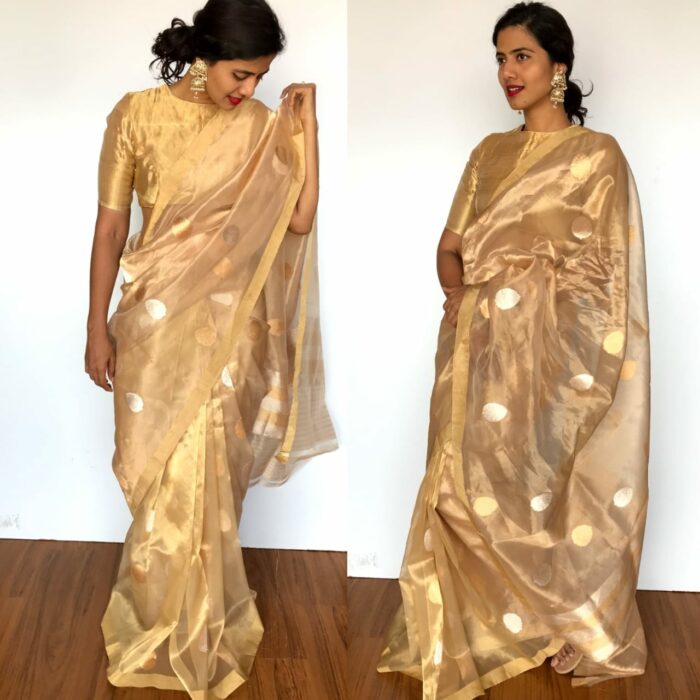
Tissue sarees are the best option for formal occasions or events, therefore styling them is really easy. Also, it gives you a royal appeal with it’s light shine. This is the reason, it looks classy with the minimal accessories.
How to maintain Tissue saree?
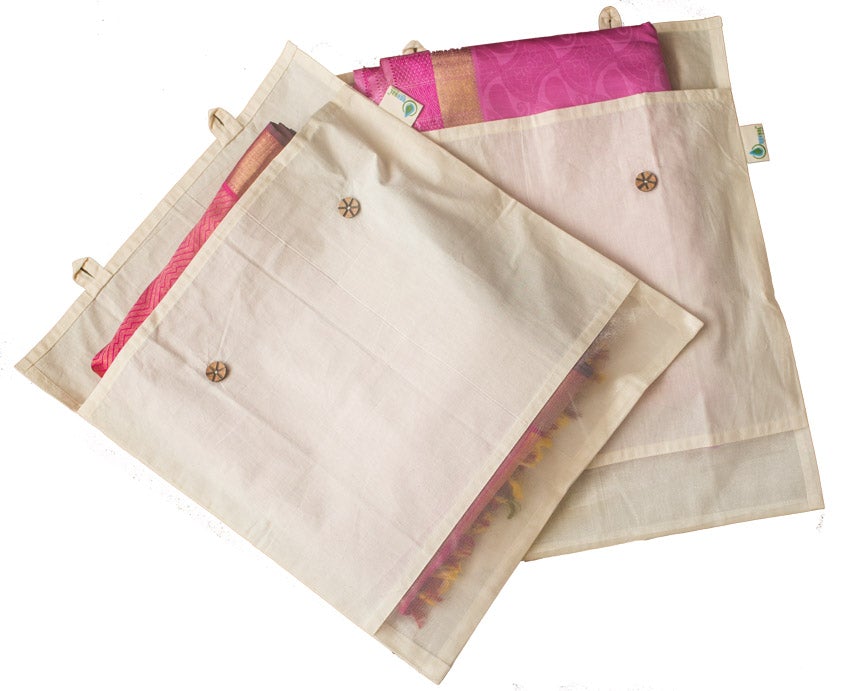
Tissue silk sarees exude elegance, and proper maintenance ensures they remain pristine over time. Follow these simple yet effective tips to care for your cherished garment.
- Gentle Washing: Begin by handwashing your tissue silk saree with a mild detergent. Avoid vigorous scrubbing, and gently squeeze excess water. This maintains the delicate fibers and intricate detailing.
- Air Drying: After washing, allow your saree to air dry. Avoid direct sunlight, as it may affect the colors. A shaded, well-ventilated area is ideal for preserving the fabric’s texture and sheen.
- Storage in Muslin: For long-term storage, use a muslin cloth or bag. This breathable fabric protects your tissue silk saree from dust and potential damage. Steer clear of plastic covers to prevent moisture retention.
- Refolding Techniques: To prevent wrinkles and potential tearing along creases, adopt a habit of refolding your saree from time to time. Be gentle in handling, distributing stress evenly to avoid damage.
- Steer Clear of Hanging: Avoid hanging your tissue silk saree for storage, as this may lead to stubborn wrinkles that are challenging to remove. Opt for flat storage to keep your saree in optimal condition.
Removing Starch from Tissue Silk Sarees:
Tip: To eliminate starch entirely from your tissue silk saree:
- Cold Water Soak: Submerge your tissue silk saree in a basin or tub filled with cold water. Ensure the entire saree is underwater.
- Wait for 30 Minutes: Let the saree soak for about 30 minutes. This duration helps dissolve the starch without harming the delicate fabric.
- Gentle Rinse: After 30 minutes, gently rinse the saree in fresh, cold water to remove any remaining starch.
- Air Dry with Care: Hang the saree to air dry. Avoid wringing or twisting it to maintain its delicate texture and shape.
Note: This method ensures the complete removal of starch, preserving the softness and grace of your tissue silk saree for a comfortable wear.
With these simple yet crucial tips, you can ensure the longevity and beauty of your tissue silk saree. Proper care not only preserves the fabric but also allows you to enjoy the timeless elegance of your saree for years to come.
How to Iron a Tissue Saree:
Ironing a tissue silk saree needs gentle care. Follow these easy steps to keep your saree smooth and beautiful.
Steps:
- Low Heat is Safe: Use the lowest heat setting on your iron. This helps prevent any damage to the delicate fabric of your saree.
- Cover with a Cloth: Place a clean cotton cloth over your saree before ironing. This extra layer protects the delicate fabric from direct heat.
- Gentle Pressing: Gently press the iron on the cloth-covered saree. Don’t leave the iron in one spot for too long. Move it gently in short movements.
- Consider Ironing Inside Out: For extra care, turn your saree inside out. This way, you’re ironing on the less delicate side, keeping the outer side safe.
- Try Vertical Ironing: Hang your saree and try ironing it from top to bottom in a downward motion. This method is good, especially for the pleats.
Following these simple steps ensures your tissue silk saree remains beautiful and free from wrinkles.
FINAL WORDS
Tissue silk sarees are delicate and beautiful, woven with fine threads resembling tissue paper. They shine, have intricate designs, and show superb craftsmanship. Different types like Kota, Uppada, Chanderi, Kanchipuram, and Banarasi offer unique styles.
These sarees are light and perfect for any occasion. They’re easy to maintain: wash gently, air dry, and store in muslin. Removing starch and ironing delicately keeps them soft.
Tissue silk sarees are timeless, each one telling a special story. Wear them with grace, whether for a big event or a special day, and let their elegance speak for you.

